Narrowleaf Plantain Hummus Recipe: Backyard Foraging
Learn about the characteristics & nutritional composition of narrowleaf plantain (Plantago lanceolata) and prepare our delicious narrowleaf plantain hummus recipe.
Narrowleaf plantain (Plantago lanceolata) is a wild food and medicinal plant that grows abundantly in many gardens and prairies. This edible plant is native to Eurasia, and has been introduced in North Africa, North America and Australia. Watch our plantain hummus recipe tutorial video below and get foraging.
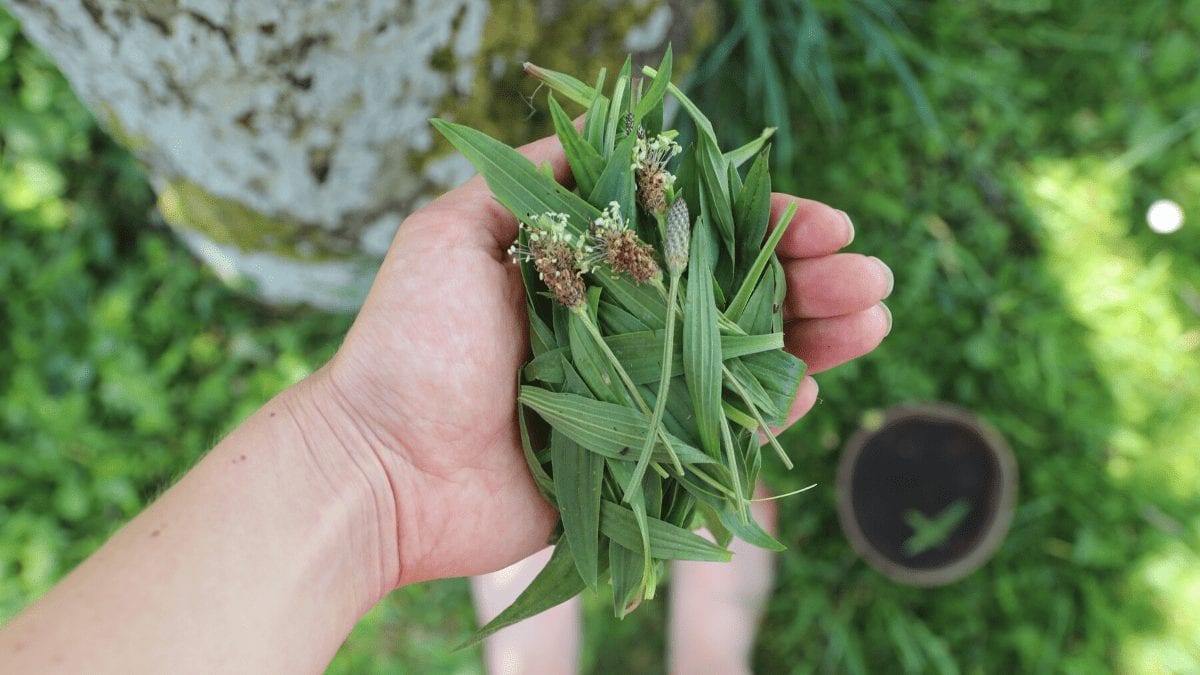
Narrowleaf Plantain Identification (Plantago lanceolata):
DISCLAIMER:This is not your complete guide to foraging plantain. Always be 100% certain of your plant identification. Familiarize yourself with local lookalikes. Be mindful of contaminated sites (toxic pesticides, pollution runoff, animal feces/urine). Read our full Health Disclaimer.
The leaf of the narrowleaf plantain is lanceolate: it’s long, wider in the middle, and shaped like a lance tip. The leaf has a short petiole, and 5 to 7 protruding veins that are practically parallel. The leaves don’t have a stem; they are basal leaves, starting at the top of the plant’s root system. They are slightly hairy.
From the base of the plantain grows a peduncle, which is the stem that supports the inflorescence (cluster of flowers). The flowers are 4mm and produce seeds. The inflorescence is dense, narrow, and elongated, because the flowers are tightly attached to the stem.
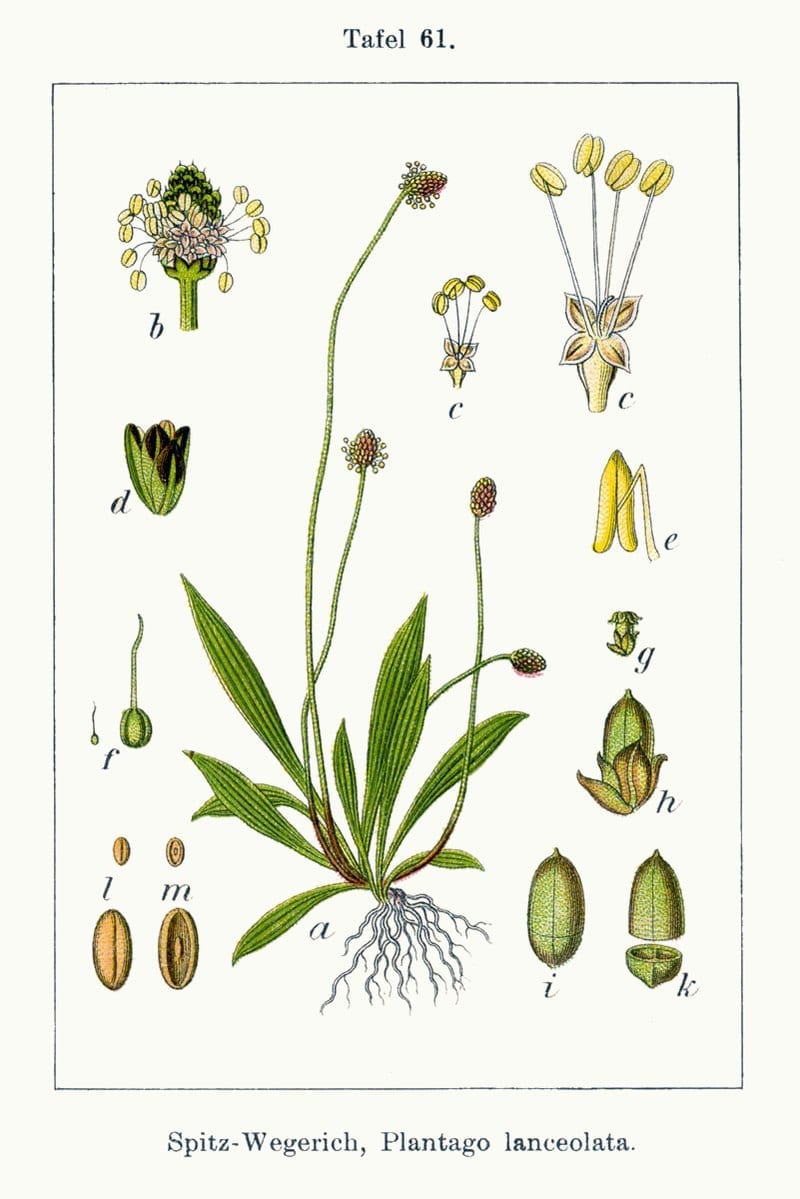
Narrowleaf Plantain (Plantago lanceolata)
Credit: Johann Georg Sturm
Narrowleaf Plantain Lookalikes
Learn about the possible confusions in your geographical location. In my area, it’s possible to confuse narrowleaf with broadleaf plantain (Plantago major) or hoary plantain (Plantago media). Both of these are edible plants and often used in the same way medicinally. If it’s your first time foraging for narrowleaf plantain, wait until the inflorescence appears. Otherwise, you may confuse it with the great yellow gentian (Gentiana lutea), the white veratrum (Veratrum album), or the white campion (Silene latifolia).
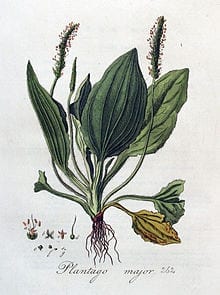
Narrowleaf with broadleaf plantain (Plantago major)
Credit:
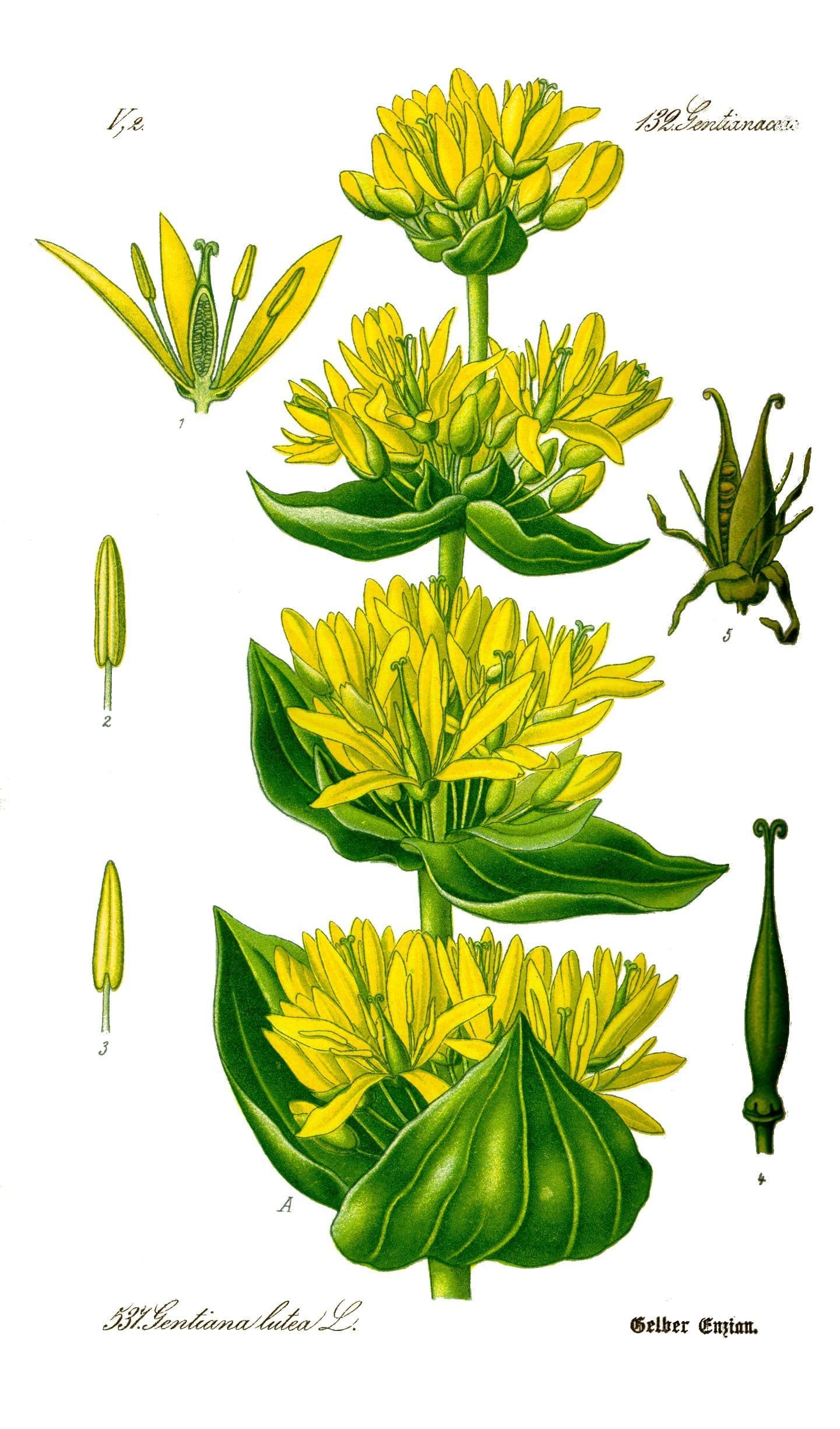
Great yellow gentian (Gentiana lutea)
Credit: Fichier d’origine
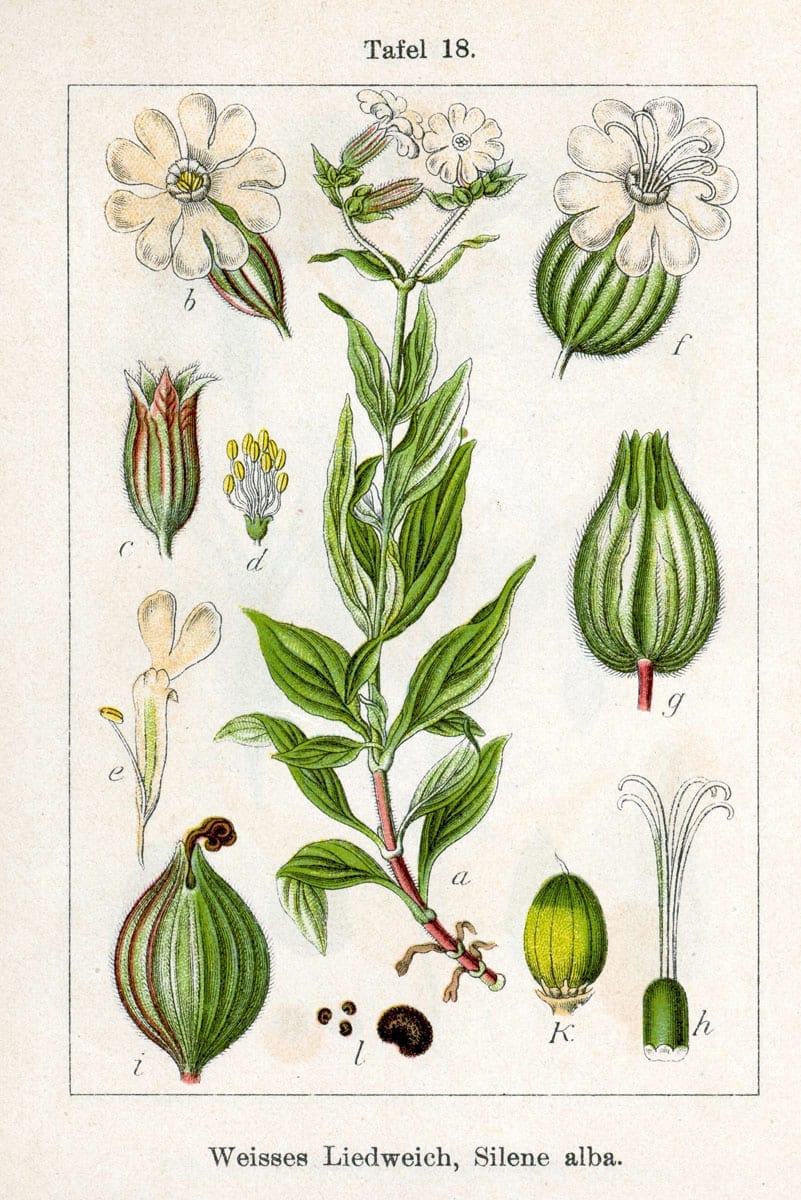
White campion (Silene latifolia)
Credit: Ayacop
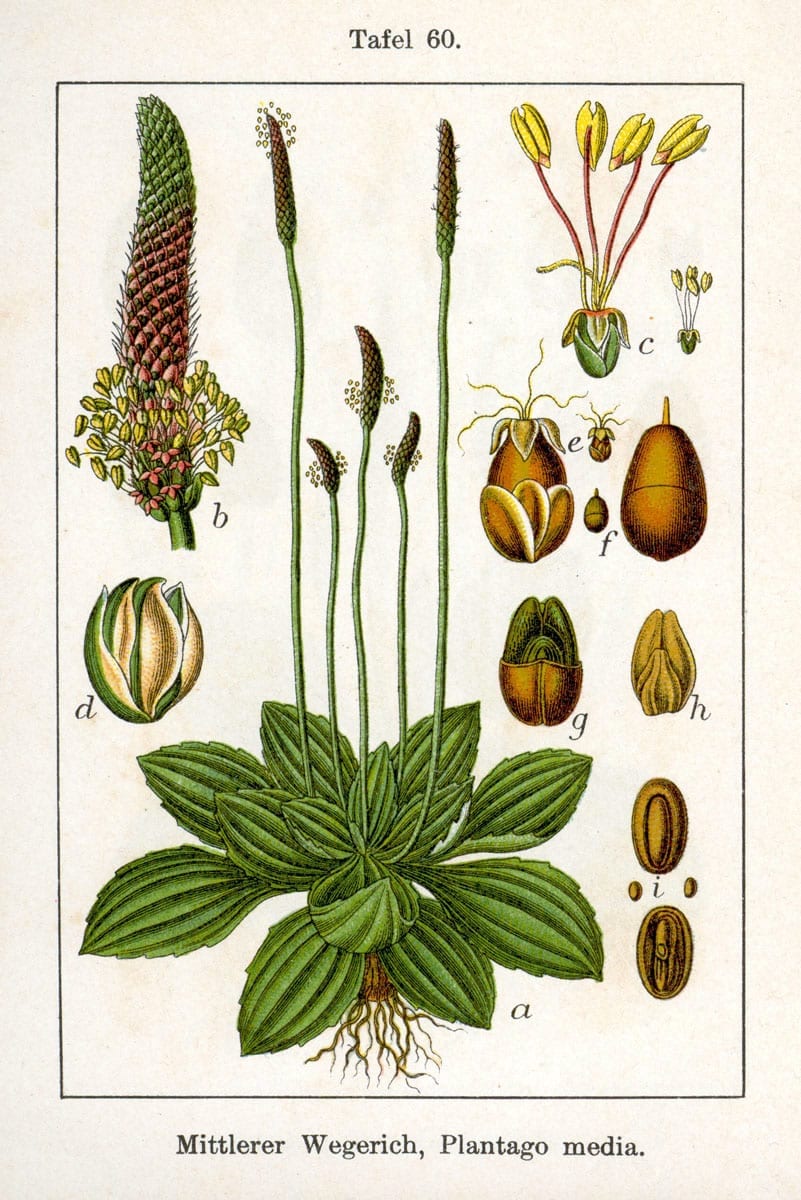
Hoary plantain (Plantago media)
Credit:
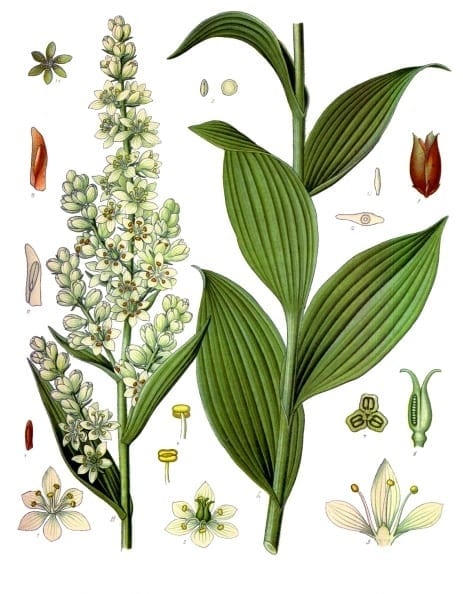
White veratrum (Veratrum album)
Credit: Franz Eugen Köhler, Köhler’s Medizinal-Pflanzen
Medicinal Properties of Narrowleaf Plantain
Plantain is often used as an emergency poultice for stings or cuts because of its hemostatic, anti-inflammatory and antiseptic properties. In our Herbal Remedies for Common Ailments course, I delve deeper into the medicinal properties of plantain. Click to sign up for the free trial of our Herbal Remedies course.
Consuming Narrowleaf Plantain: Wild Superfood
Plantain is so often considered a weed, but really it’s closer to a superfood that grows abundantly everywhere and is considered safe to consume. The narrowleaf plantain leaves contain protein, mucilage, fatty acids, starch, vitamins B2 and B3, vitamins C, E and K, minerals and beta-carotene. Foraging for plantain is a fun and affordable way to incorporate nutrient-rich greens in your diet.
The young leaves of narrowleaf plantain that grow in the center of the base of the plant are the tastiest leaves. These are best in the Spring. The older plantain leaves are tough and bitter, but still perfectly edible. Plantain leaves can be eaten raw in hummus, pesto, pâté, salads, or cooked up in soups. The inflorescences are edible at any stage (including the infructescence stage), and can be eaten raw or prepared as capers (especially at the early stage). Over-consuming plantain seeds may have a laxative effect.
Narrowleaf Plantain Hummus Recipe
Servings: 4-5 servings
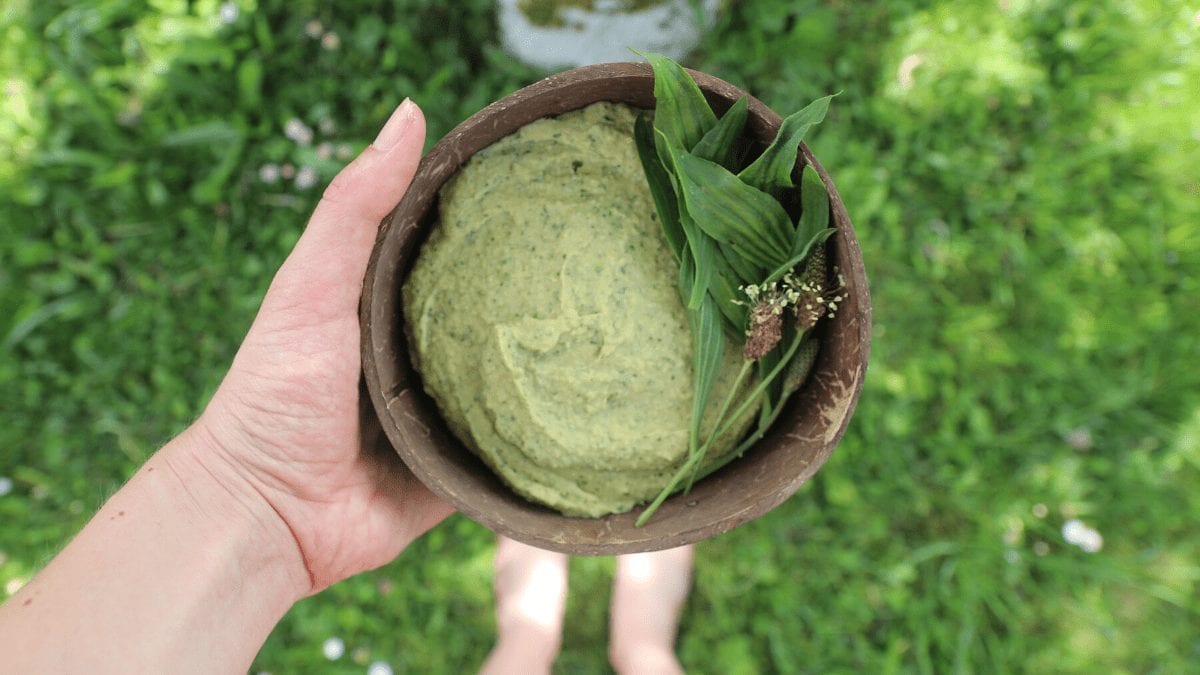
Ingredients:
-
1 cup of chickpeas (canned or cooked)
-
1 tbsp. tahini
-
Juice from ½ lemon
-
1 heaping cup of fresh plantain leaves
-
2 cloves of garlic (this will make a spicy hummus! To make it less spicy, roast the hummus, or add just one clove)
-
1/8 tsp. salt
-
2 tbsp. olive oil
-
2 tbsp. water
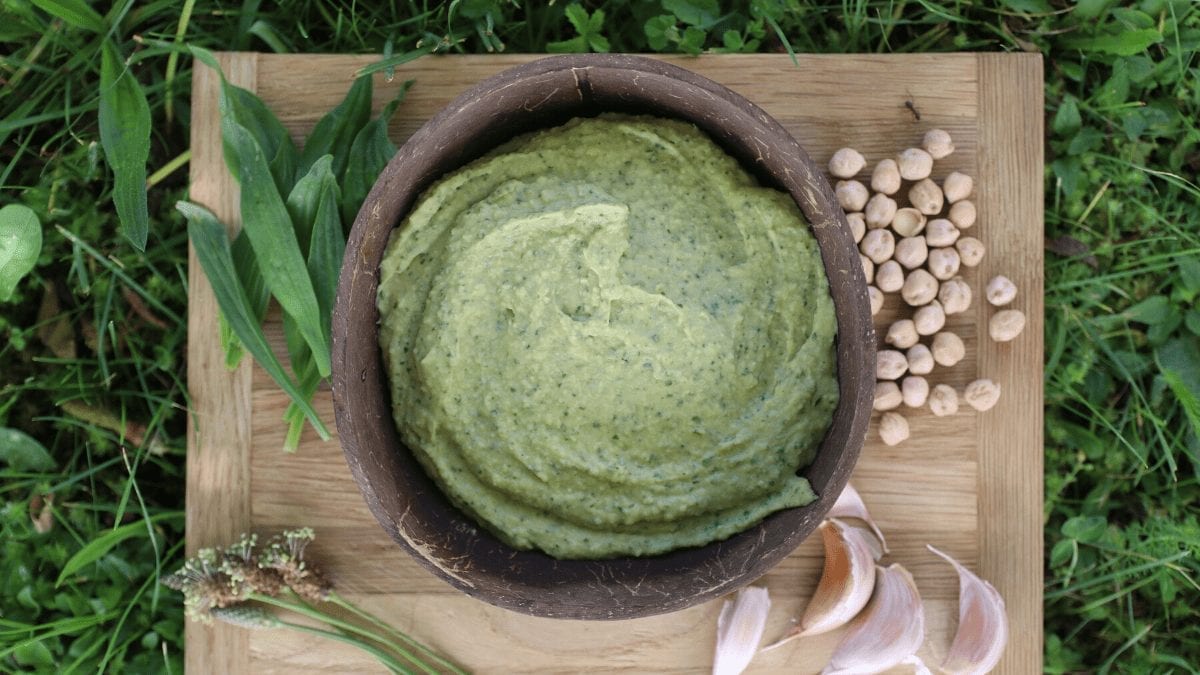
Steps:
- Go foraging for plantain! Be 100% certain of your plant ID.
- Rinse the plantain leaves
- Blend all the ingredients in a food processor until smooth
- Serve with raw vegetables or chips
This hummus recipe is the perfect consistency and is well worth a try with or without plantain leaves! We also have a raw sprouted hummus recipe you may enjoy.
Watch our narrowleaf plantain hummus recipe tutorial video:
Have you ever gone foraging for plantain? Have you incorporated wild food in your hummus before? Let us know what you think of this wild hummus recipe in the comments below!
Love,
Christelle
P.S. If you enjoyed this edible plants recipe, you’ll love our other wild food recipes including our Purple Dead Nettle Tofu Scramble, Red Clover Wild Taboulleh, and Dandelion Salad.
By commenting you accept our Privacy Policy.






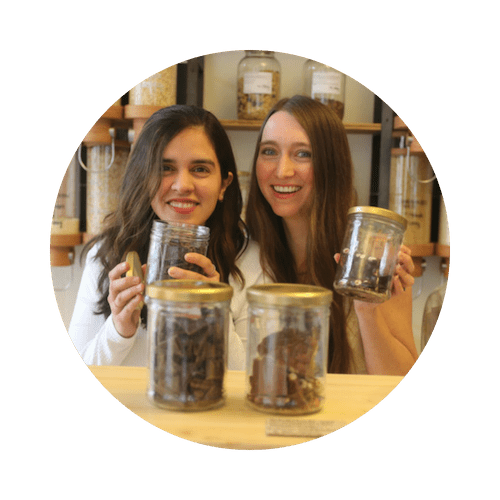
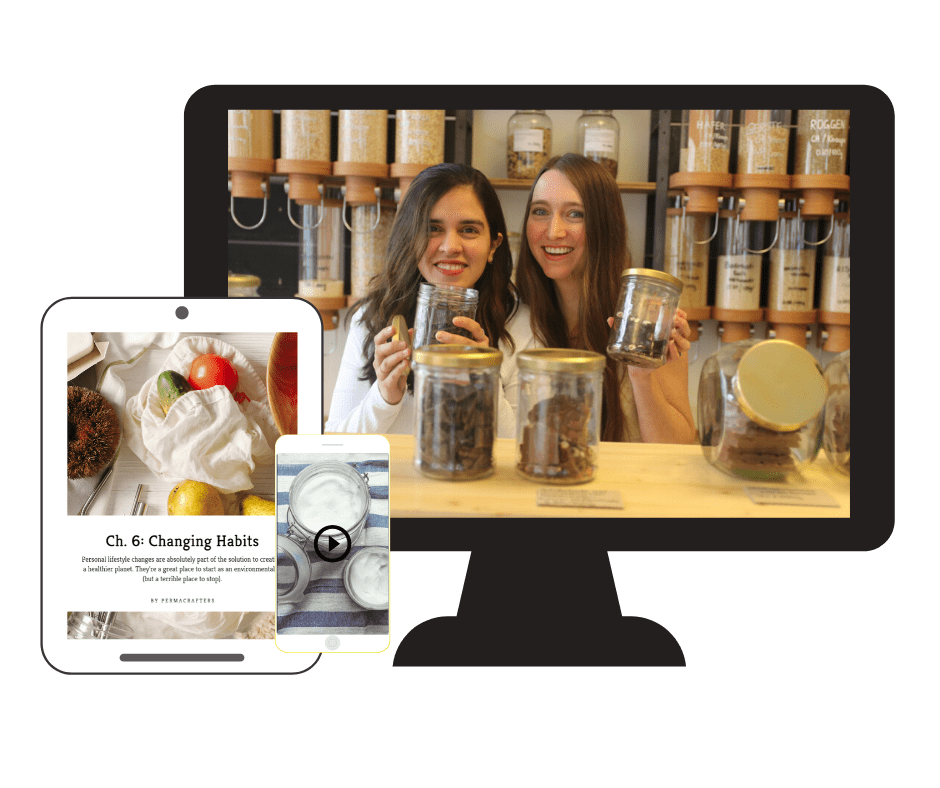
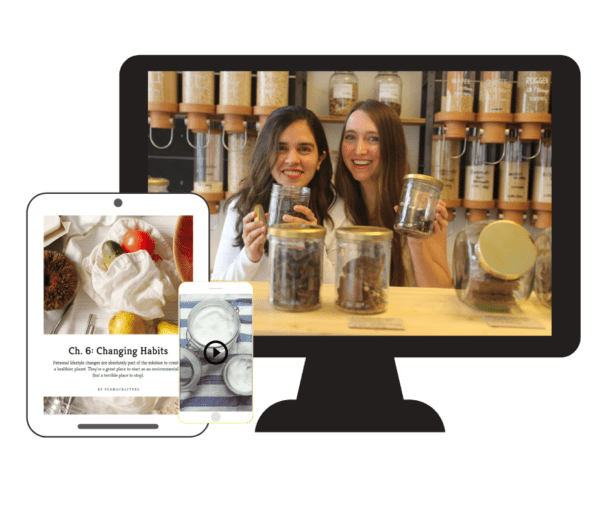
0 Comments
Trackbacks/Pingbacks